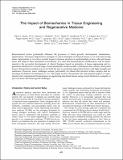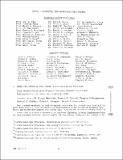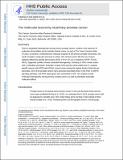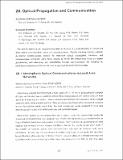| dc.contributor.author | Butler, David L. | |
| dc.contributor.author | Goldstein, Steven A. | |
| dc.contributor.author | Guldberg, Robert E. | |
| dc.contributor.author | Guo, X. Edward | |
| dc.contributor.author | Kamm, Roger Dale | |
| dc.contributor.author | Laurencin, Cato T. | |
| dc.contributor.author | McIntire, Larry V. | |
| dc.contributor.author | Mow, Van C. | |
| dc.contributor.author | Nerem, Robert M. | |
| dc.contributor.author | Sah, Robert L. | |
| dc.contributor.author | Soslowsky, Louis J. | |
| dc.contributor.author | Spilker, Robert L. | |
| dc.contributor.author | Tranquillo, Robert T. | |
| dc.date.accessioned | 2011-03-11T20:57:39Z | |
| dc.date.available | 2011-03-11T20:57:39Z | |
| dc.date.issued | 2009-12 | |
| dc.date.submitted | 2009-05 | |
| dc.identifier.issn | 1937-3368 | |
| dc.identifier.uri | http://hdl.handle.net/1721.1/61683 | |
| dc.description.abstract | Biomechanical factors profoundly influence the processes of tissue growth, development, maintenance, degeneration, and repair. Regenerative strategies to restore damaged or diseased tissues in vivo and create living tissue replacements in vitro have recently begun to harness advances in understanding of how cells and tissues sense and adapt to their mechanical environment. It is clear that biomechanical considerations will be fundamental to the successful development of clinical therapies based on principles of tissue engineering and regenerative medicine for a broad range of musculoskeletal, cardiovascular, craniofacial, skin, urinary, and neural tissues. Biomechanical stimuli may in fact hold the key to producing regenerated tissues with high strength and endurance. However, many challenges remain, particularly for tissues that function within complex and demanding mechanical environments in vivo. This paper reviews the present role and potential impact of experimental and computational biomechanics in engineering functional tissues using several illustrative examples of past successes and future grand challenges. | en_US |
| dc.language.iso | en_US | |
| dc.publisher | Mary Ann Liebert, Inc. | en_US |
| dc.relation.isversionof | http://dx.doi.org/10.1089/ten.teb.2009.0340 | en_US |
| dc.rights | Article is made available in accordance with the publisher's policy and may be subject to US copyright law. Please refer to the publisher's site for terms of use. | en_US |
| dc.source | Mary Ann Liebert | en_US |
| dc.title | The Impact of Biomechanics in Tissue Engineering and Regenerative Medicine | en_US |
| dc.type | Article | en_US |
| dc.identifier.citation | Butler, David L. et al. “The Impact of Biomechanics in Tissue Engineering and Regenerative Medicine.” Tissue Engineering Part B: Reviews 15.4 (2009): 477-484. ©2009 Mary Ann Liebert, Inc. | en_US |
| dc.contributor.department | Massachusetts Institute of Technology. Department of Mechanical Engineering | en_US |
| dc.contributor.approver | Kamm, Roger Dale | |
| dc.contributor.mitauthor | Kamm, Roger Dale | |
| dc.relation.journal | Tissue Engineering. Part B | en_US |
| dc.eprint.version | Final published version | en_US |
| dc.type.uri | http://purl.org/eprint/type/JournalArticle | en_US |
| eprint.status | http://purl.org/eprint/status/PeerReviewed | en_US |
| dspace.orderedauthors | Butler, David L.; Goldstein, Steven A.; Guldberg, Robert E.; Guo, X. Edward; Kamm, Roger; Laurencin, Cato T.; McIntire, Larry V.; Mow, Van C.; Nerem, Robert M.; Sah, Robert L.; Soslowsky, Louis J.; Spilker, Robert L.; Tranquillo, Robert T. | en |
| dc.identifier.orcid | https://orcid.org/0000-0002-7232-304X | |
| mit.license | PUBLISHER_POLICY | en_US |
| mit.metadata.status | Complete | |



